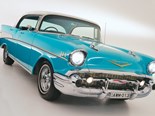1955-1957 Chevrolet Tri-Five buyer's guide







































|

|

|

|

|

|

|

|

|

|

|

|

|

|

|

|

|

|

|
For this Tri-Five owner, it's a close call on whether you blame fate or genetics
For owner John Frostell, the whole Chevrolet Tri-Five thing can be put down to two major causes: Family influence, and an old copy of Life magazine.
But before we get into that, let’s cover off a quick backgrounder on Tri-Five Chevs, for those of you who are new to the idea. Otherwise known as Tri-Years, it covers 1955-57 and for many this is a pivotal era for the marque.

There’s no mistaking the Harley Earl influence in the styling
It saw the introduction of a new small block Turbo-Fire 265 V8 that was to grow in capacity and output to become legendary across the decades. That it was lighter and more powerful than the existing mainstream 235 inline six was a good start.
Back in 1955, Chevrolet had 14 models in its range and its primary sales target was to beat Ford. You could get a sedan with a six-cylinder powerlant for just $1600, while options and add-ons saw you closer to the top of the range in a well-equipped Bel Air at near $2800. This was also the year that saw the introduction of the elegant Nomad two-door wagon.
| Read next: 1957 Chevrolet Bel Air review
Across those three years, the Bel Air in particular rose in stature, and ‘grew’ the distinctive rear wings. Unusually in a market that celebrated rampant consumerism, it’s said the ’57 Bel Air two-door hardtop was seen as collectible as far back as the early 1960s.

Which brings us back to the two gems you see here: a 1956 four door which John uses for bespoke Melbourne tours, and the two-door ’57, which is his personal obsession.
When it comes to the fascination with American cars, he can start by blaming his family. His father’s side is Swedish, a nation famous for its love of American metal. As John puts it, "They will go for anything. If there’s some rust with a bit of steel in it, they’ll see it as a challenge to keep them going through the winter months. They’ll haul anything out of a swamp and rebuild it.
| Reader Resto: 1956 Chev Bel Air
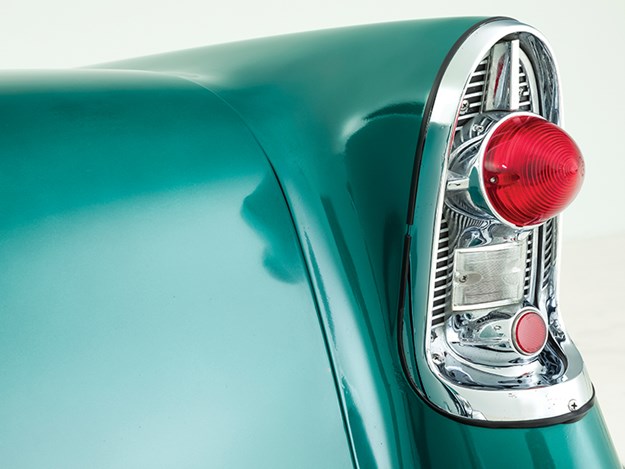
"They have a lovely expression that goes to old cars with big chrome grilles – they call it the dollar grin, because it smells of money."
And there’s a very real family connection: "Mum was in Chicago in the late fifties and owned a Lincoln. It had dodgy power steering and she wasn’t able to park the car properly, and my father, a Buick-owning lanky Swede who was also there, decided to offer help and that’s how they met.
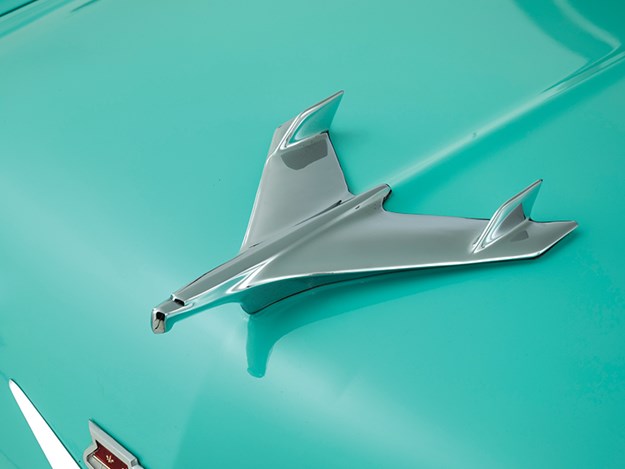
"I’m not saying I was conceived in one, but there is a family connection with American cars!"
That link grew into something closer to reality in the early eighties.

"One of my fathers’s colleagues was an airbrush illustrator and he always had the latest American magazines flying around and I saw a Life magazine (September 1983) about the ten best and ten worst ever American cars. The ten worst included cars like the Edsel, but the ten best included things like these Tri-Five Chevys. They were so beautiful and so outrageous, I thought one day I’m going to have one of these.
"I’d never seen one in the flesh, but the magazine planted the seed."
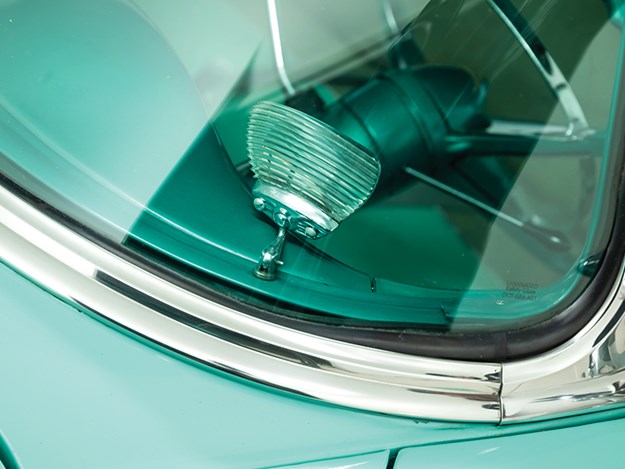
A few years later, around 1986, that seed turned into reality in the shape of an imported ’57 hardtop in left-hand drive and in need of restoration. Among the first tasks was to convert it to right-hand drive, a job made easier by the existence of donor Australian market cars (albeit base-model sixes) which had the required firewall and dash structures.
"I teed up someone from the Chevy club to help," explains John. "The basics were done pretty quickly. But I decided to restore and the resto took its time to complete."
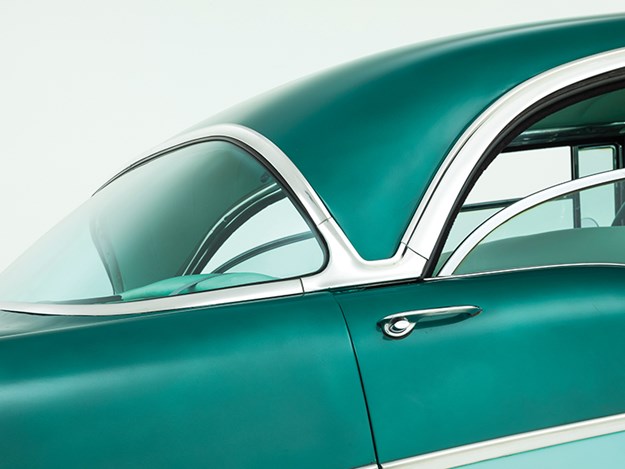
He decided to keep the car largely stock, including the 283 V8 in Power-Pack trim (claiming 220 horses) and the two-speed Powerglide auto.
Was it tempting to switch over the trans to something with more ratios? "I like the two-speed, it’s kind of funny that you’ve changed from neutral to top gear by the time you’ve crossed the intersection. It works really well, the engine is really torquey, though it doesn’t help with the fuel economy."
Once released from the workshop, the ’57 made an appearance at Motorclassica in Melbourne, with some sections of the paint still hardening.

As for the ’56 four-door hardtop, that’s a more recent acquisition, which John first got to drive in the US and then bring over here. It was always intended as a more practical ‘working’ car and to that end has had a few upgrades.
The previous owner opted for a 700D auto – a three-speed with overdrive – which is a good proposition for longer drives. John then swapped the original 265 V8 for a 283.

The four-door started with a 265 and now runs a 283 V8
That’s the car which is at the centre of his business, d’luxe Classic Car Tours (dluxeclassiccartours.com). The idea is he loads you up and takes you on a personalised cruise around Melbourne and surrounding districts such as the local wineries. Business of course fell in a bit of a heap over the last couple of Covid-affected years, but seems to be picking up again.
He clearly gets a thrill out of providing the service. "People are having a good time when you’re in a good mood and providing good company. If you’re just sitting there driving like a muppet, there’s no buzz created from it. People like the tour and they like the car, but hanging out is what makes it rewarding."
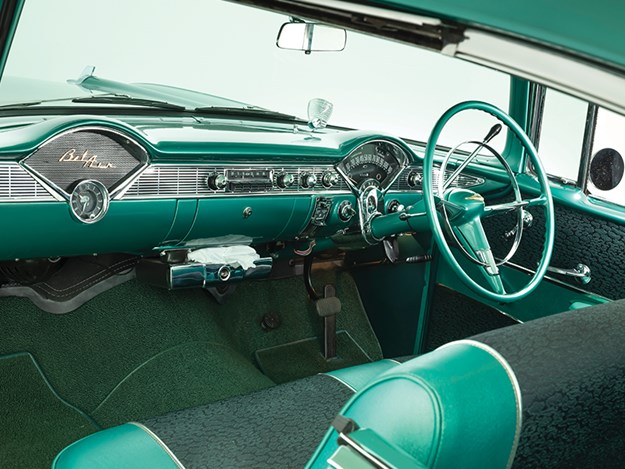
So what’s the next project? That’s unclear, but another seed of an idea seems to be germinating. "I found a supercharger a few weeks ago. It’s a Paxton.
"I had heard about them and this thing fell into my lap. There’s the spare motor out of the ’56 – do I rebuild it as a spare, or for a performance project?" A gasser, perhaps?
Meanwhile John reckons he has enough trouble finding space for his existing duo. We’ll see…

BUYER'S CHECKLIST:
Body & chassis
Rust attacks in a variety of areas – lower edges of front and rear guards, inner sills, firewall (inspect from under the dash), window surrounds, floors and rear spring attachment points. Reproduction body panels and structural steel are available and even paying freight costs on large slabs of metal can be cheaper than paying rust removal costs. If considering a restored two-door look for poor door fit and hinge wear. Water gets into the cabin through perished windscreen and rear window rubbers. Check inside doors on Hardtops for rust and blocked drainage holes.
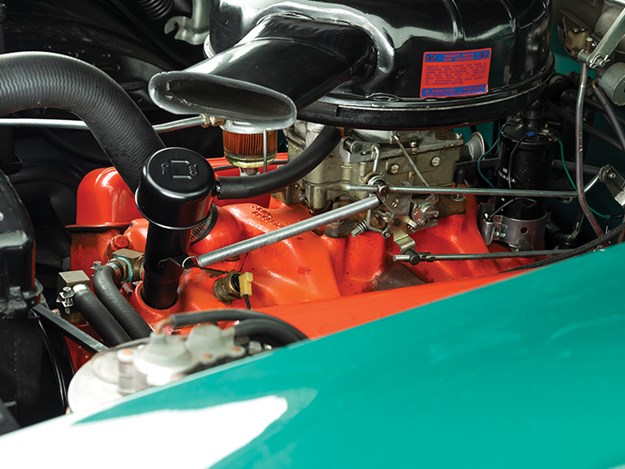
The engine that launched a thousand projects...this time in 283 form
Engine & transmission
Any engine you’re likely to find beneath the bonnet of a 1957 Chevrolet should be an extremely reliable device. Replacement blocks for early 265/283 motors are difficult to find but many have been fitted with later 327 or 350 cubic-inch V8s. Listen for bearing clunks when starting from cold, check under the engine for leaks and the exhausts for smoke denoting ring or cylinder wall wear. Original differentials struggle with the torque of later engines and conversion to a Ford nine-inch centre makes sense. Automatic transmissions – the original two-speed or later three-speed – are reliable. `Three on the tree’ transmissions suffer gear selection problems due to worn linkages.
Suspension & brakes
The standard drum brakes aren’t really up to the rigors of modern driving and cars with a front disc conversion are preferable for regular use. 1970s Holden discs or brakes from later Chevrolets are easily adapted. Rear leaf springs crack but new replacements are available. All-new rubber kits are cheap and transform a tired front-end’s handling and response. The steering comes with some degree of play but genuine slop and 75-100mm of free-play means a reconditioned steering box and other parts are needed.
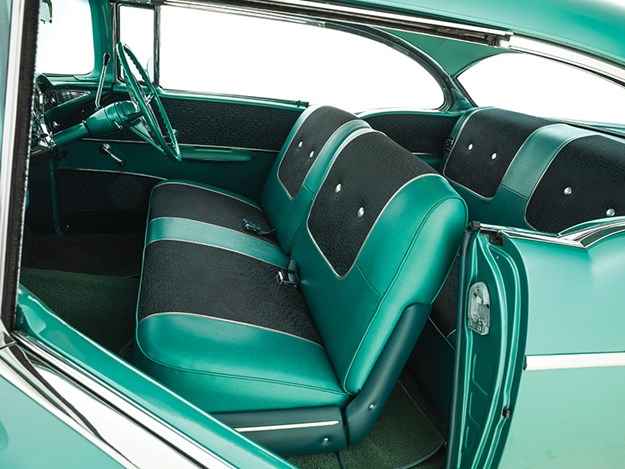
Interior & electrics
Aged wiring produces a range of frustrating problems, made worse by features that further stress old electrics (power windows and seat adjusters a top on convertibles). the greater the probability of component failure. Fuel gauges are notoriously unreliable and can show ¼ full when the tank is empty. Reproduction trim materials, handles, dash knobs, and gauges are available. Genuine radios can be obtained second-hand but aren’t cheap.
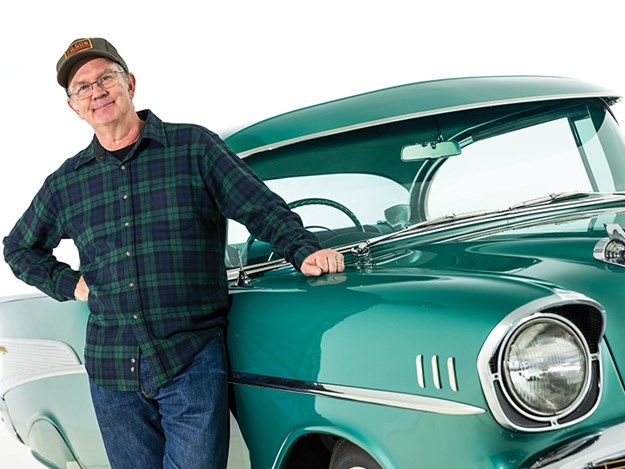
1955-1957 Chevrolet specs
NUMBER BUILT: 1,713,478 (1955) 1,623,376 (1956) 1,555,316 (1957)
BODY: Separate body/chassis, four door sedan & hardtop, two-door sedan and hardtop, two and four-door station wagon, two-door van, convertible
ENGINE: 3.9 litre in-line six-cylinder or 4.3 litre V8 with overhead valves, single down-draft carburettor.
POWER & TORQUE: 121kW @ 4400rpm (V8), 347Nm @2200prm
PERFORMANCE: 0-97km/h – 12.3 sec 0-400 metres: 19.0 sec (V8 automatic)
TRANSMISSION: Three speed manual, two-speed automatic
SUSPENSION: Front: independent with coil springs, anti-roll bar and telescopic shock absorbers, Rear: semi-elliptic springs with telescopic shock absorbers
BRAKES: Four-wheel drum, power assistance optional
TYRES: 6.70 x 15 crossply
From Unique Cars #460, Dec 2021
Unique Cars magazine Value Guides
Sell your car for free right here
Get your monthly fix of news, reviews and stories on the greatest cars and minds in the automotive world.
Subscribe

.jpg)
.jpg)
.jpg)










